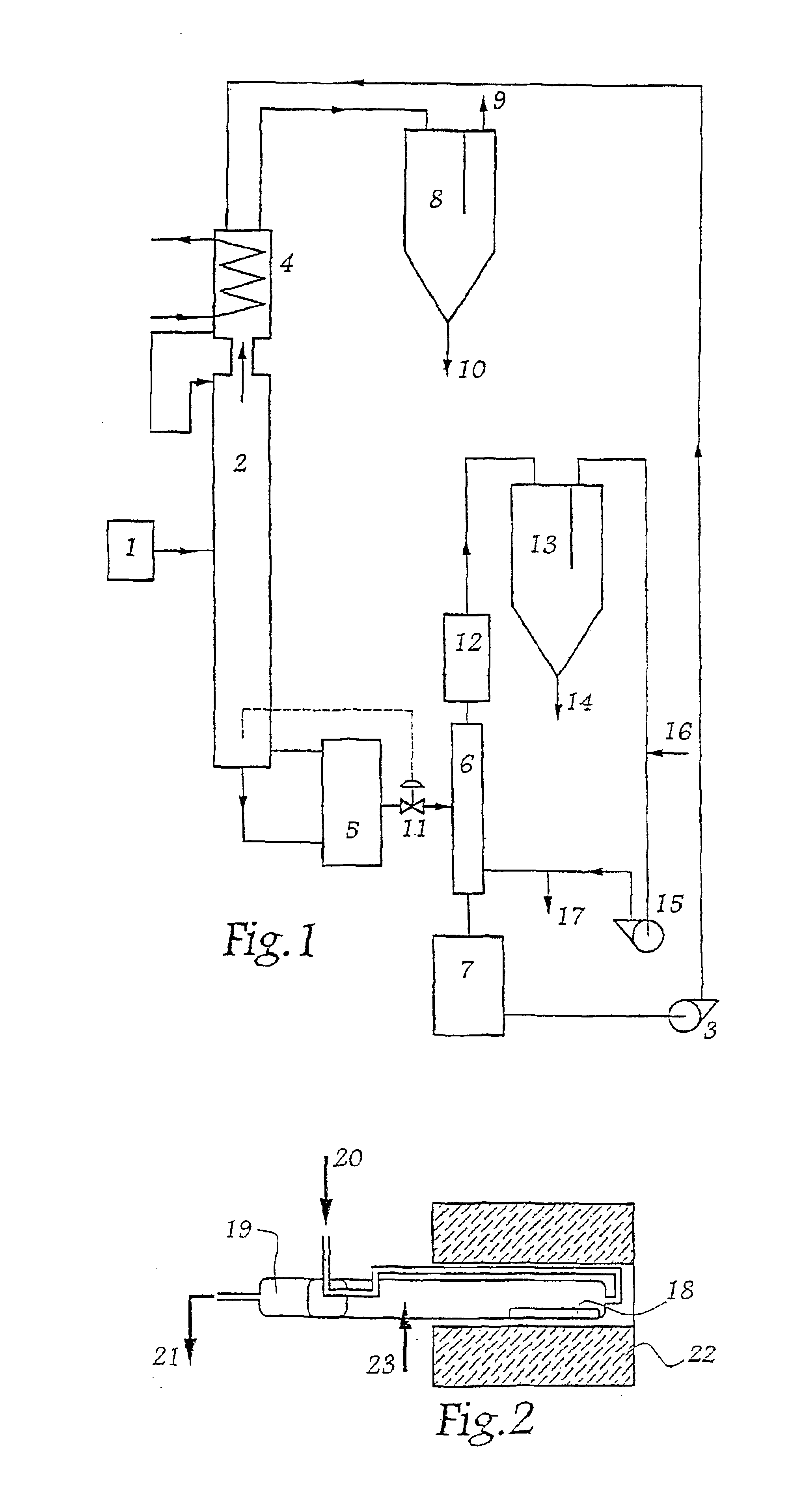Method for separating zirconium and hafnium tetrachlorides with the aid of a melted solvent
a technology of extractive disti and zirconium tetrachloride, which is applied in the direction of dispersed particle separation, titanium compounds, separation processes, etc., can solve the problems of high cost, low yield, and difficult separation of zirconium and hafnium tetrachloride, and achieve the effect of improving productivity
- Summary
- Abstract
- Description
- Claims
- Application Information
AI Technical Summary
Benefits of technology
Problems solved by technology
Method used
Image
Examples
Embodiment Construction
[0032]The installation comprises an arrangement 1 for feeding a distillation column 2 with raw zirconium tetrachloride vapor that also contains hafnium tetrachloride. A pump 3 circulates the extraction solvent of the invention downwards along the distillation column as a countercurrent to the flow of zirconium and hafnium tetrachloride vapors. The solvent travels in a closed circuit via the condenser absorber 4, the column 2, the boiler 5, the stripping column 6, and the tank 7, from which it is returned by the pump 3 to the condenser absorber 4.
[0033]By way of example, the solvent may be a mixture of AlCl3 / KCl and of MgCl2, having the following molar ratios:[0034]0.7[0035]0.01
[0036]The vapors enriched in zirconium tetrachloride on rising up the column 2 by exchange with the solvent flowing as a countercurrent leave the column 2 from the top thereof, and then passes through the condenser absorber 4 in which the vapors saturate the solvent. A fraction of the vapors that is not retain...
PUM
| Property | Measurement | Unit |
|---|---|---|
| temperature | aaaaa | aaaaa |
| temperature | aaaaa | aaaaa |
| temperatures | aaaaa | aaaaa |
Abstract
Description
Claims
Application Information
 Login to View More
Login to View More - R&D
- Intellectual Property
- Life Sciences
- Materials
- Tech Scout
- Unparalleled Data Quality
- Higher Quality Content
- 60% Fewer Hallucinations
Browse by: Latest US Patents, China's latest patents, Technical Efficacy Thesaurus, Application Domain, Technology Topic, Popular Technical Reports.
© 2025 PatSnap. All rights reserved.Legal|Privacy policy|Modern Slavery Act Transparency Statement|Sitemap|About US| Contact US: help@patsnap.com


